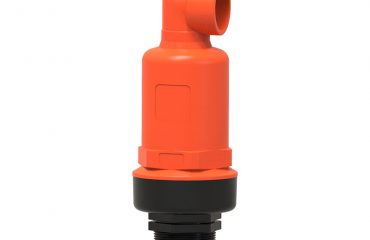
A blind flange is a type of flange that is used to seal the end of a pipeline or a vessel. It is a flat disc that has the same diameter as the flange it is attached to but without a center hole. Blind flanges are typically made of forged steel, stainless steel, or carbon steel, and they come in various sizes and pressure ratings.
Blind flanges are used for various purposes in the piping systems. They can be used to close the end of a pipeline or vessel temporarily, to isolate the pipe from the rest of the system, to stop the flow of fluids, or to add pressure relief valves. Blind flanges are also used in systems that require periodic inspection and cleaning.
The installation of a blind flange in a piping system is a relatively simple process, but it requires careful attention to detail to ensure a proper seal. There are several steps involved in installing a blind flange:
Step 1: Preparation
Before installing the blind flange, it is essential to prepare the pipe or vessel to which the flange will be attached. This involves cleaning the pipe’s end surface thoroughly to remove any dirt, rust, or debris that may interfere with the flange’s seal. The surface must also be free of burrs or sharp edges that can damage the gasket or seal.
Step 2: Positioning
The blind flange must be correctly positioned on the pipe or vessel before installation. The flange’s bolt holes must align with the pipe’s flange or the vessel’s nozzle. If the holes do not match, the blind flange cannot be bolted into place, and the seal will not be achieved.
Step 3: Inserting the Gasket
A gasket must be inserted between the blind flange and the pipe or vessel to ensure a proper seal. The gasket must be the correct size and material for the application – typically, gaskets are made of rubber, neoprene, asbestos, or graphite. The gasket should be inserted carefully to avoid damage.
Step 4: Tightening the Bolts
Once the gasket is in place, the blind flange can be bolted into position. All bolts must be tightened to the specified torque rating, and the tightening sequence should follow the recommended pattern to ensure even pressure distribution. Proper bolting is essential to ensure a secure seal and prevent leaks.
Step 5: Inspecting the Seal
After installing the blind flange, it is vital to inspect the seal to ensure it is tight and secure. The visual inspection can be done by using a flashlight to examine the gasket and flange surface, looking for any signs of leaks or damage. A pressure test should also be conducted to confirm that the seal is leak-free, and the pressure is maintained over time.
The installation of a blind flange in a piping system is a critical task that requires careful attention to detail. Failure to install the flange correctly can result in leaks, equipment damage, and safety hazards. By following the proper procedures and guidelines for installation, a secure and reliable seal can be achieved, ensuring a successful installation of a blind flange.
 Language
Language Espanol
Espanol English
English Italian
Italian عربى
عربى
 Skype: chinamaker99
Skype: chinamaker99  Tel: 86-316-5120812
Tel: 86-316-5120812 Email:
Email:  Whatsapp:
Whatsapp: 